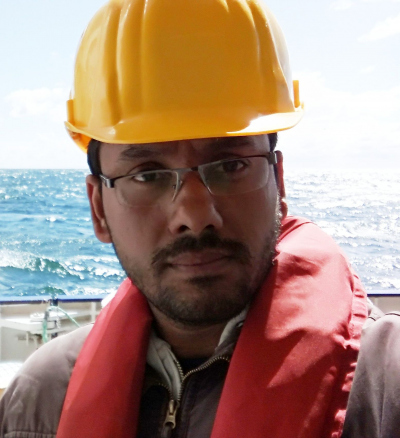- Graduate School GLOMAR
- PhD student members
- Venkata Siva Subrahmanyam Kattamuri
Venkata Siva Subrahmanyam Kattamuri
| Institution: | University of Bremen |
| Office: | MARUM |
| E-mail: | [Bitte aktivieren Sie Javascript] |
| Other webpage(s): | Siva's MARUM web page |

PhD Project
Studying the mid-Cretaceous (90Ma) ocean circulation using an Earth System Model with an energetically consistent internal wave mixing parameterisation.
Studying paleoclimate (climate of thousands of years ago) is fascinating for the reason that Earth is different from today concerning factors like atmospheric composition, ocean circulation, glacial extent and ecological diversity. The deeper we go in time for this study, the profound the differences become. Millions of years ago when Earth’s tectonic plates are still drifting apart from each other, the face of our Earth is unrecognizable and our climate system is like that of another planet. Alongside the curiosity factor, studying these unique climate periods is important to understand the natural climate cycles and differentiate the anthropogenic impact on the system.
For my project, I study the global ocean circulation, distribution of dissolved oxygen and carbon of the Cenomanian-Turonian boundary (CTB) (90Ma) period which is well known for an anoxic environment. Due to extreme carbon dioxide concentrations in the atmosphere, this period had a greenhouse climate with a higher global mean temperature than today. The continental configuration is different and the global sea levels are around 100m higher than today. Sediment records and black shales from this period indicate low oxygen levels in the deep ocean. My project aims to check the hypothesis that change in these geophysical boundary conditions impacted the ocean circulation and mixing processes and thus the biogeochemistry of the deep ocean.
I use a fully coupled Earth System model iCESM1.2 (isotope enabled Community Earth System Model version 1.2) to simulate the deep paleo period. A state-of-the-art ocean internal wave mixing parameterisation is used in the model for an accurate estimate of the tidal energy dissipation and mixing in the deep ocean. One of the main objectives of this project is to prepare bathymetry of this period from an available raw topography dataset and use it as an input in the climate model.
Thesis Committee
| Prof. Dr. Michael Schulz | University of Bremen |
| Dr. André Paul | University of Bremen |
| Dr. Friederike Pollmann | University of Hamburg |
| Dr. Patrick Scholz | Alfred Wegener Institute, Helmholtz Center for Polar and Marine Research (AWI), Bremerhaven |


